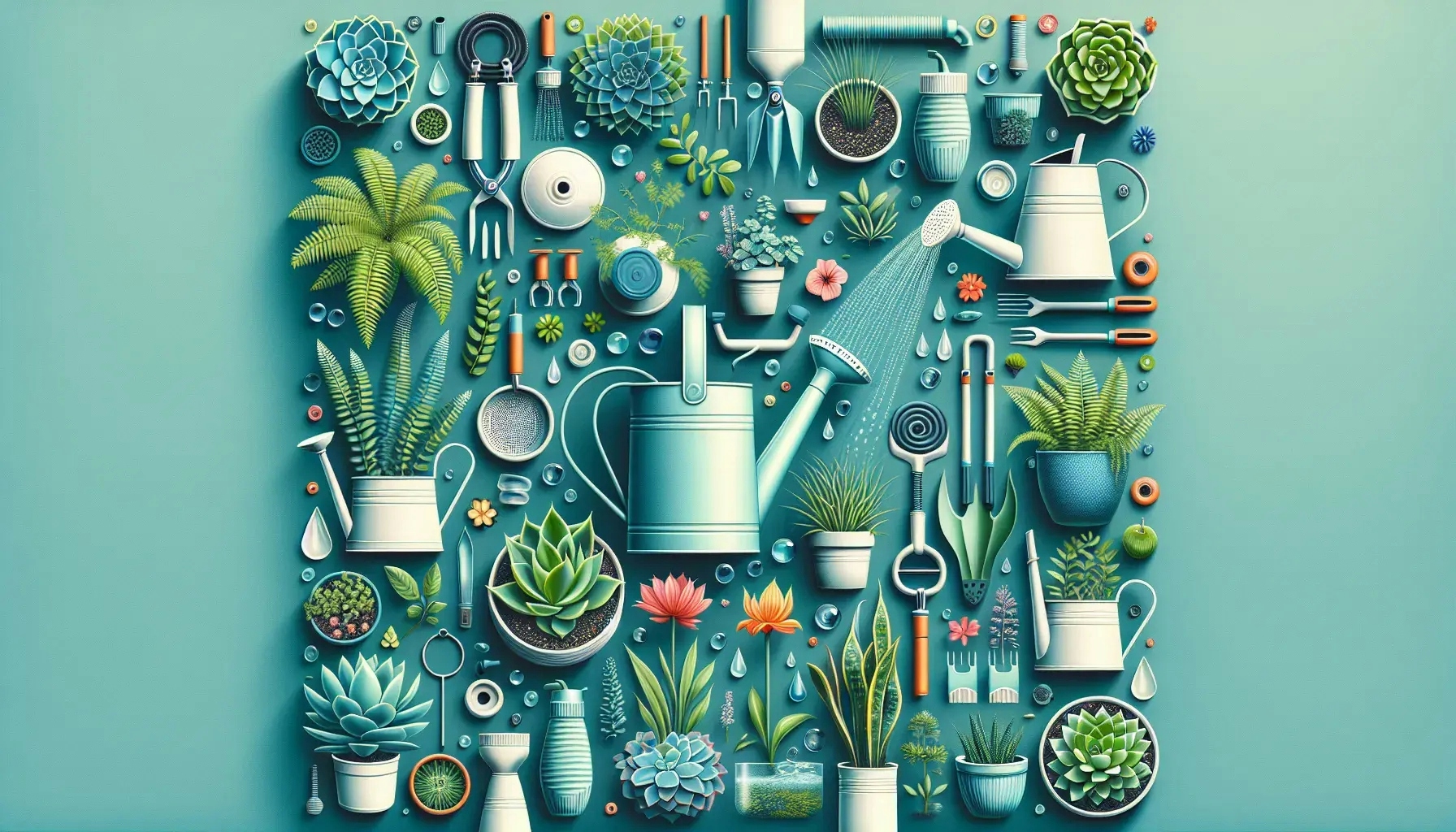Best Practices for Watering Different Plants
Gardening.guru

Welcome to the world of botany, where the health and vitality of your plants depend heavily on their watering regimen. This blog post aims to guide you through the best practices for watering different plants. We'll delve into the specific needs of various plant species, the factors influencing their water requirements, and the techniques to ensure optimal hydration. Let's embark on this enlightening journey to nurture your green thumb.
Understanding the Importance of Watering
Water plays a pivotal role in a plant's life. It aids in the transport of nutrients, supports structure, and participates in photosynthesis. However, watering plants isn't as straightforward as it seems. Overwatering can lead to root rot, while underwatering can cause wilting. Striking the right balance is crucial.
Different plant species have unique watering requirements. Factors such as the plant's native habitat, its stage of growth, and the current season all influence these needs. For instance, a cactus, native to arid desert regions, requires less frequent watering than a fern that thrives in humid rainforests.
Understanding the specific watering needs of your plants can significantly improve their health and growth. This knowledge allows you to mimic their natural environment as closely as possible, providing them with the best conditions to thrive.
Recognizing Signs of Overwatering and Underwatering
To water your plants effectively, you must recognize the signs of overwatering and underwatering. Overwatered plants often exhibit yellowing leaves, a sign of oxygen starvation. Root rot, a common consequence of overwatering, can cause the plant to wilt, mimicking the symptoms of underwatering.
On the other hand, underwatered plants typically display brown, crispy leaves. The soil may also pull away from the sides of the pot, indicating a lack of moisture. In severe cases, the plant may drop leaves to conserve water.
By recognizing these signs, you can adjust your watering practices accordingly. Remember, it's always better to err on the side of underwatering. Most plants can recover from a slight drought, but recovering from root rot can be a much more challenging task.
Mastering the Art of Watering Indoor Plants
Indoor plants add a touch of nature to your living space. However, they can be a bit tricky to water correctly. Indoor plants generally require less water than outdoor plants due to lower light levels and evaporation rates.
When watering indoor plants, make sure to water thoroughly. The water should reach the bottom of the pot, ensuring all roots receive moisture. However, avoid letting the plant sit in standing water, as this can lead to root rot.
The frequency of watering depends on the type of plant and its environment. Succulents and cacti prefer their soil to dry out completely between waterings, while tropical plants prefer consistently moist soil. Always check the soil moisture before watering to prevent overhydration.
Navigating the Challenges of Watering Outdoor Plants
Outdoor plants, exposed to the elements, have different watering needs. Sunlight, wind, and temperature all affect the rate at which water evaporates from the soil and the plant's leaves.
In hot, sunny conditions, plants may need watering daily. However, in cooler, cloudy weather, watering may only be necessary every few days. Always check the soil before watering. If the top inch of soil is dry, it's usually a good indication that your plants need water.
Remember, deep, infrequent watering encourages the growth of strong, deep roots, making your plants more resilient to drought. On the other hand, frequent, shallow watering can lead to weak, shallow roots.
Exploring Advanced Watering Techniques
For the more adventurous gardeners, there are advanced watering techniques to explore. These methods can help provide your plants with a steady supply of water, reducing the risk of overwatering or underwatering.
Drip irrigation is a method that delivers water directly to the plant's roots. It's a highly efficient technique that conserves water by minimizing evaporation. Another method, self-watering pots, contain a reservoir that holds water, slowly releasing it into the soil as needed.
Remember, these advanced techniques should be tailored to your plant's specific needs. Always monitor your plants closely when trying out new watering methods to ensure they're receiving the right amount of water.
Adapting Watering Practices to Different Plant Species
The diversity of the plant kingdom means that different species have evolved to survive in a wide range of water conditions. From the succulents of the desert to the ferns of the rainforest, each plant has its unique watering needs.
Succulents and cacti, adapted to arid conditions, prefer their soil to dry out completely between waterings. On the other hand, ferns and other tropical plants prefer consistently moist soil. Some plants, like the peace lily, even signal when they need water by drooping their leaves.
By understanding and respecting these differences, you can provide each plant with the care it needs to thrive. Remember, the key to successful watering lies in observation and adaptation.
Hydrating Your Green Companions: A Recap
Watering plants is both an art and a science. It requires understanding the unique needs of different plant species, recognizing the signs of overwatering and underwatering, and adapting your watering practices accordingly. Whether you're caring for indoor plants or outdoor plants, mastering the art of watering can lead to healthier, happier plants. So, grab your watering can and start nurturing your green companions with newfound knowledge and confidence.